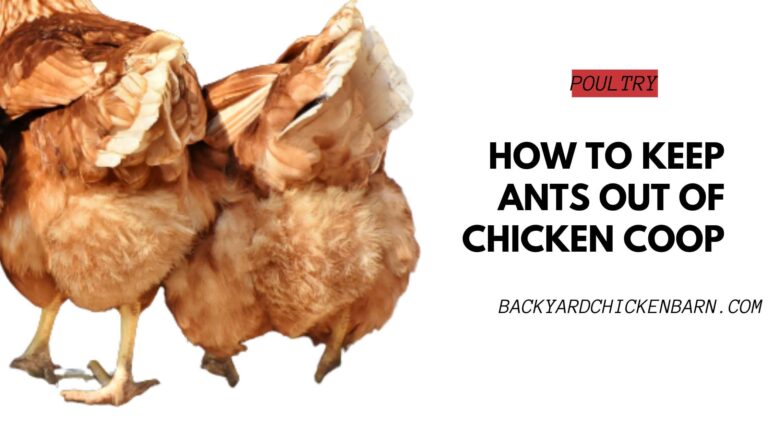Chicken Laws by County in Ohio: Everything
If you’re thinking about raising chickens in your backyard in Ohio, you’re not alone. Backyard poultry has become a growing trend, offering fresh eggs, natural pest control, and a touch of rural charm—even in suburban and urban settings. But before you start building a coop or ordering chicks, it’s critical to understand that Ohio chicken laws vary significantly by city, township, and county.
Unlike some states with broad rural allowances, Ohio gives municipalities and zoning authorities the power to regulate—or even prohibit—backyard chickens. So while the state doesn’t outright ban chickens, whether you can legally keep them depends almost entirely on where you live.
Let’s break down what you need to know about chicken laws across Ohio counties, cities, and unincorporated areas so you can raise chickens confidently and legally.
Are Backyard Chickens Legal in Ohio?
Yes, backyard chickens are legal in Ohio—but only if your local ordinances permit them. The Ohio state government does not prohibit residents from owning chickens. However, cities and counties are free to pass their own rules about animal keeping, and many do.
These local laws typically regulate:
-
The number of chickens allowed
-
Whether roosters are permitted
-
Coop location and construction standards
-
Lot size requirements
-
Noise, sanitation, and nuisance concerns
-
Whether you need a permit or license
That means you must check with your local zoning office or municipal code before moving forward, even if your neighbor has chickens. What’s legal for them might not be for you.
Chicken Laws in Major Ohio Cities (By County)
Here’s a look at backyard chicken laws in various cities across the state, organized by their county:
Franklin County (Columbus, Hilliard)
Columbus allows chickens in residential areas but has strict limits:
-
Up to 4 hens permitted.
-
Roosters are not allowed.
-
A permit is required for backyard poultry.
-
Coops must be kept clean and located in the rear yard.
Hilliard, also in Franklin County, allows chickens on lots of at least half an acre. Up to 6 hens are allowed without a rooster. For properties one acre or larger, a rooster is permitted. Zoning restrictions apply, and permits are often required.
Cuyahoga County (Cleveland, Lakewood)
In Cleveland, chickens are legal. Residents must obtain a permit, and lot size determines the number of chickens allowed. Generally, 1 chicken is allowed per 800 square feet of lot space. Roosters are not allowed in residential areas.
Lakewood permits backyard hens through a specific ordinance. The city allows a limited number of hens with a mandatory permit. Coops must be located in the rear yard and meet certain spacing and sanitation standards.
Hamilton County (Cincinnati)
Cincinnati allows chickens, and the rules are more flexible depending on the property’s size and zoning. Up to 24 hens may be permitted on larger lots, but roosters are generally not allowed. Certain neighborhoods may require permits or homeowner consent.
Lucas County (Toledo)
Toledo permits backyard chickens, though residents may need to comply with sanitation and coop setback rules. Up to 6 hens are typically allowed, with no roosters permitted. Rules vary slightly by neighborhood and housing density.
Montgomery County (Dayton)
Dayton allows backyard chickens, but permits may be required. There are usually restrictions on flock size, and roosters are not allowed. Coop placement and maintenance are heavily emphasized in local codes.
Summit County (Akron)
Akron permits chickens, though specific rules around coop design, flock size, and rooster ownership vary by neighborhood. While not every part of Summit County follows the same rules, urban zones usually ban roosters and cap hens at a manageable number for residential areas.
Warren County (Lebanon)
In Lebanon, backyard chickens are legal with a few clear guidelines:
-
Properties under 1 acre can have up to 6 hens.
-
Properties over 1 acre can have up to 12 hens.
-
Roosters are not allowed.
-
Coops must be screened from view and at least 20 feet from all property lines.
Williams County (Stryker)
Stryker permits backyard chickens with a $25 permit. Residents can have up to 6 hens, but no roosters. The coop must be located in the rear yard, at least 10 feet from property lines, and not exceed 100 square feet.
Crawford County (Bucyrus)
Bucyrus allows backyard chickens, although roosters are discouraged. There’s no clearly defined flock limit, but residents are advised to avoid nuisance situations such as odor, noise, or unsanitary conditions. Specific setbacks for coops may be enforced.
Rural and Unincorporated Areas in Ohio
In Ohio’s rural and unincorporated areas, chicken laws are typically governed by county zoning regulations. These areas often follow less restrictive rules, especially if the land is zoned for agricultural use.
Common themes in rural county regulations:
-
Agricultural-zoned land often allows unlimited chickens with minimal oversight.
-
Residential-zoned properties may require a minimum lot size—often one acre or more.
-
Some counties enforce setback rules (distance between coop and property lines or homes).
-
Even in rural areas, counties may enforce animal cruelty, sanitation, and nuisance laws.
However, even if your county allows chickens, townships and villages within that county may have stricter ordinances. Always verify with your township zoning board.
HOA Restrictions and Deed Limitations
Even if your city or county allows chickens, your Homeowners’ Association (HOA) or neighborhood deed restrictions can prohibit them. HOAs often have rules that are stricter than local ordinances. These may include:
-
Total ban on poultry
-
Limits on coop visibility or location
-
Breed or size restrictions
-
Requirements for neighbor approval
Violating HOA rules can result in fines or legal action, so it’s critical to check your deed and HOA policies before starting a flock.
Common Chicken-Keeping Requirements in Ohio
Though specific rules vary, here are common requirements across many Ohio cities and counties:
| Category | Typical Rule |
|---|---|
| Number of Chickens | 3–6 hens; more allowed on larger or rural lots |
| Roosters | Generally prohibited due to noise concerns |
| Coop Placement | Must be in the rear yard; often 10–25 feet from property lines or dwellings |
| Permits | Often required; fees range from $20–$50 |
| Sanitation | Coops must be cleaned regularly to avoid odor and pest problems |
| Lot Size Minimums | Urban: no requirement or minimum 0.25 acres; Rural: often 0.5–1 acre or more |
| Fencing/Containment | Chickens must be enclosed and not allowed to roam freely outside fenced areas |
Final Thoughts: Raising Chickens in Ohio the Right Way
Raising backyard chickens in Ohio can be a fun and sustainable way to provide food for your family—but only if you do it within the law. With regulations varying widely by county, city, and even neighborhood, it’s absolutely essential to:
-
Check your local city and county ordinances
-
Understand your zoning designation
-
Confirm HOA or deed restrictions
-
Apply for permits if required
-
Maintain clean, humane, and neighbor-friendly conditions
Getting the legal side right from the beginning will save you from headaches down the road—and ensure your feathered friends can live long, healthy, and productive lives right in your backyard.


